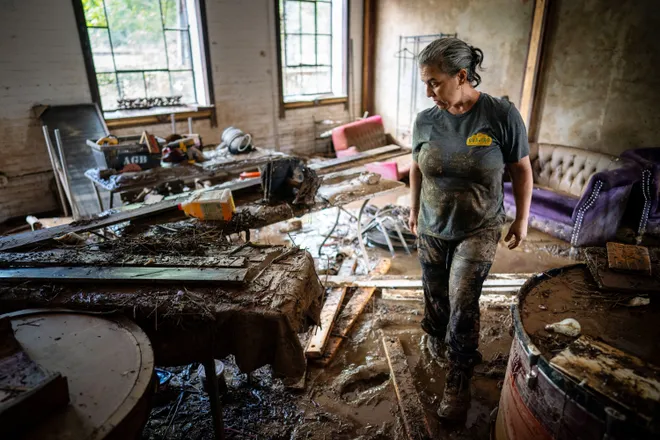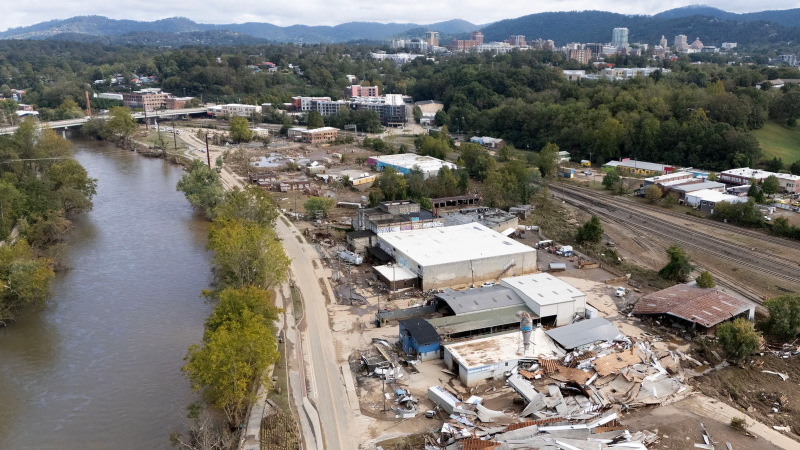Helene will likely cause thousands of deaths over decades, study suggests
So far, Hurricane Helene has killed at least 162 people across the Southeast. Unfortunately, that might be just the beginning of the deaths and suffering caused by the storm.
A new study out Wednesday says that hurricanes and tropical storms are far deadlier than initial death tolls suggest.
According to the study, an average U.S. tropical cyclone indirectly causes 7,000 to 11,000 excess deaths, far more than the dozens or hundreds of deaths officially attributed to storms. In all, scientists estimate tropical storms since 1930 have contributed to between 3.6 million and 5.2 million deaths in the U.S.
Those additional deaths come from indirect causes in the years following the event, according to the research.
Overall, the death toll of a tropical cyclone may be a broader public health issue than previously thought, as disasters frequently trigger a domino effect of other threats to affected populations.
Incredibly, the researchers estimate 25% of infant deaths and 15% of deaths among people aged 1 to 44 in the U.S. are related to tropical cyclones.

How do tropical cyclones cause the excess deaths?
Researchers found that these excess deaths were due to causes such as diabetes, suicide, sudden infant death syndrome or another cause that was not recorded. Cardiovascular disease was the next most common cause, followed by cancer.
Official government statistics record only the number of individuals killed during these storms. Usually, these direct deaths, which average 24 per storm in official estimates, occur through drowning or some other type of trauma, according to the study.
"People are dying earlier than they would have if the storm hadn't hit their community," said senior study author Solomon Hsiang, a professor of environmental social sciences at Stanford University.
Looking at the death and destruction from Helene, Hsiang told the Associated Press that "Watching what’s happened here makes you think that this is going to be a decade of hardship on tap, not just what’s happening over the next couple of weeks.”

How was the study done?
The study was based on statistical analysis of data from the 501 tropical cyclones that hit the Atlantic and Gulf coasts from 1930 to 2015, and mortality rates for various populations within each state just before and after each cyclone.
"After each storm there is sort of this surge of additional mortality in a state that’s been impacted that has not been previously documented or associated with hurricanes in any way,” Hsiang told the AP.
Researchers also found that the long, slow surge of cyclone-related deaths tends to be much higher in places that historically have experienced fewer hurricanes, according to a statement from Stanford University.
"Because this long-run effect on mortality has never been documented before, nobody on the ground knew that they should be adapting for this and nobody in the medical community has planned a response," said study lead author Rachel Young, a postdoctoral scholar at the University of California Berkeley.
Burden higher for some groups
The study found that while more than three in 100 deaths nationwide are related to tropical cyclones, the burden is far higher for certain groups, with Black individuals three times more likely to die after a hurricane than white individuals.
This finding puts stark numbers to concerns that many Black communities have raised for years about unequal treatment and experiences they face after natural disasters, according to the study.
The study was published Wednesday in the peer-reviewed British journal Nature.
Disclaimer: The copyright of this article belongs to the original author. Reposting this article is solely for the purpose of information dissemination and does not constitute any investment advice. If there is any infringement, please contact us immediately. We will make corrections or deletions as necessary. Thank you.





